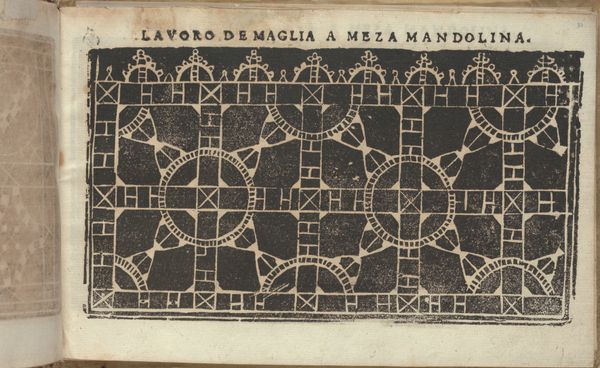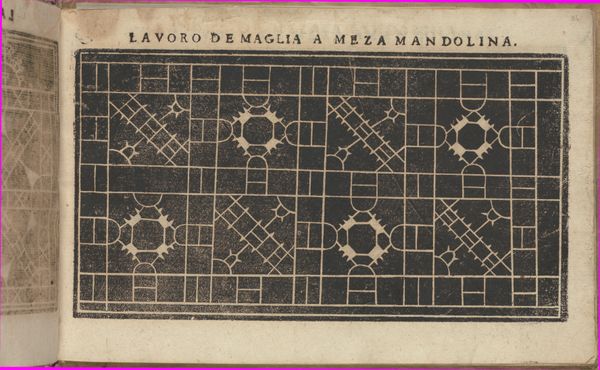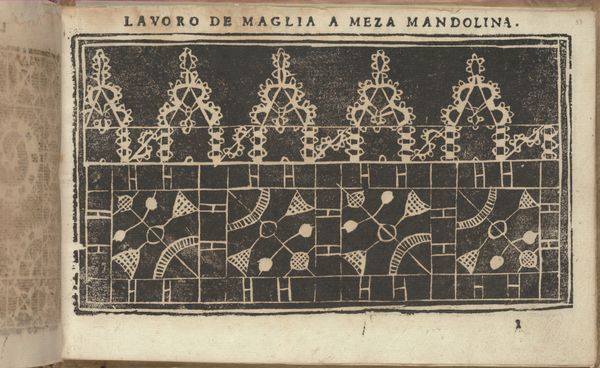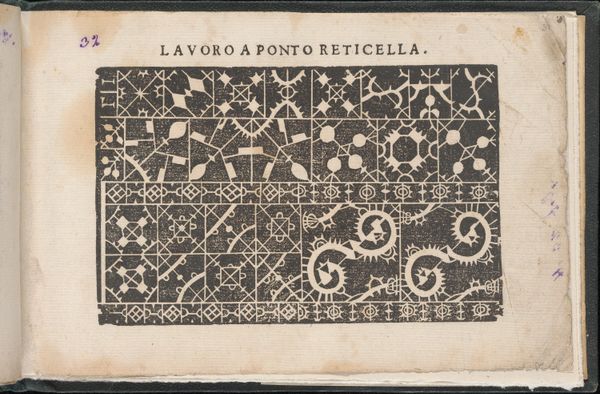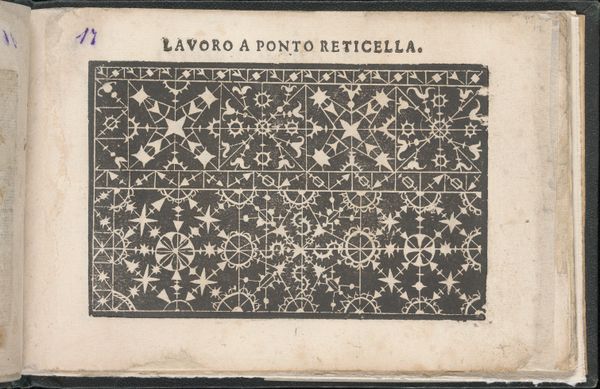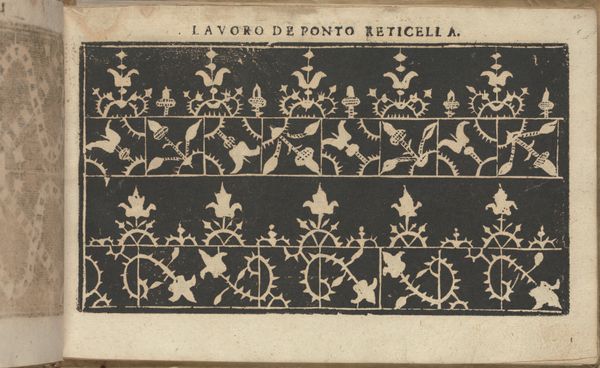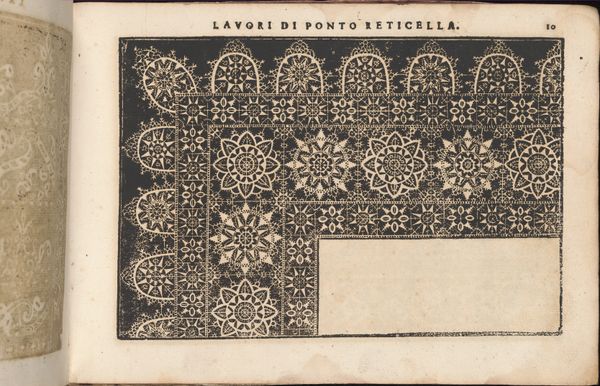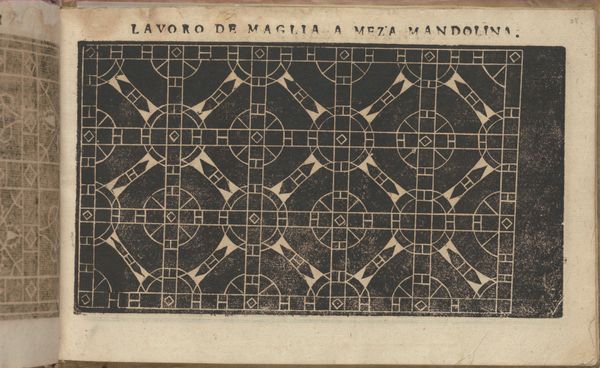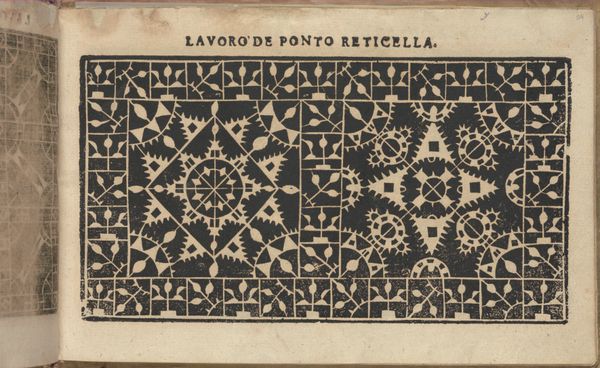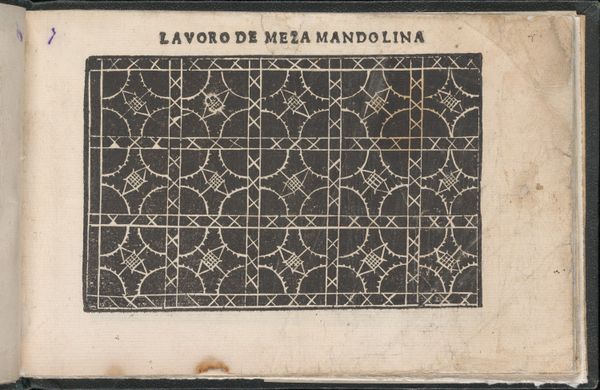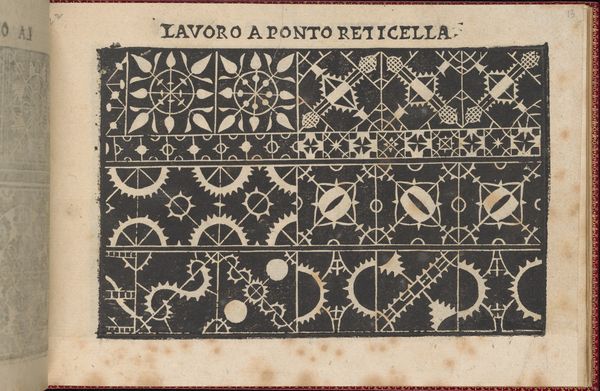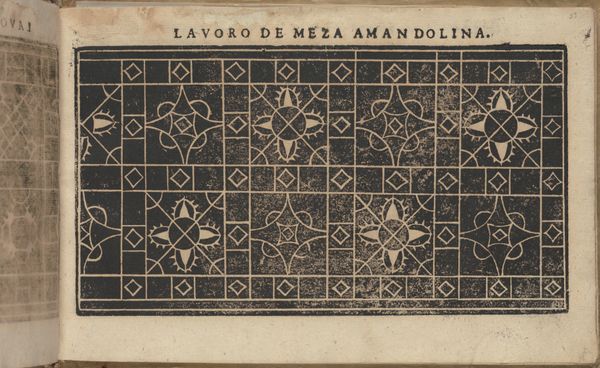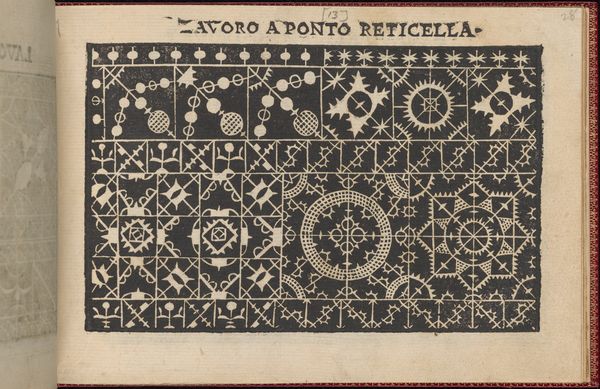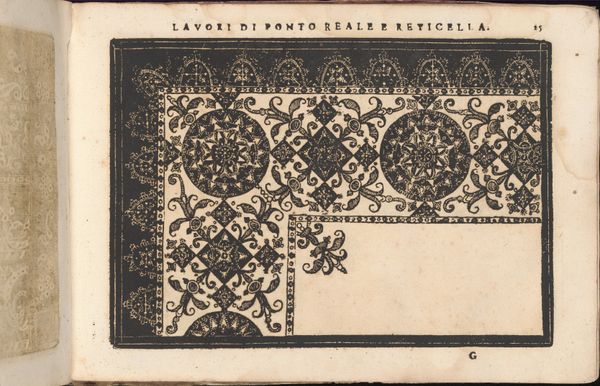
Studio delle virtuose Dame, page 36 (recto) 1597
0:00
0:00
drawing, print
#
drawing
# print
#
11_renaissance
#
geometric
Dimensions: Overall: 5 1/2 x 8 1/16 in. (14 x 20.5 cm)
Copyright: Public Domain
Curator: It’s immediately striking, isn’t it? Such graphic power from what is ostensibly a pattern. Editor: Absolutely. It feels very purposeful, austere even, but there’s something playful hinted at too. What are we looking at exactly? Curator: This is a page from Isabella Catanea Parasole’s "Studio delle virtuose Dame," created in 1597. The work is a drawing, reproduced as a print, and resides at the Metropolitan Museum. It’s actually a design meant to guide the crafting of lace! Editor: So, a pattern book for lacemakers? Knowing that completely changes how I perceive it. Suddenly, the rigidity of the shapes speaks to the precise, repetitive movements of needle and thread. Curator: Indeed! And Parasole's choice of geometric forms is compelling. Circles are divided into quadrants, nestled within squares. There’s a real sense of containment here. Circles, often symbols of wholeness, are here regimented by these right angles. Does that resonate with the constraints placed upon women artists of her era? Editor: It absolutely does. Women throughout history had to subvert dominant structures in subtle, everyday acts. Parasole’s very profession — lace-making, considered a 'feminine' craft – becomes a site of coded resistance and creativity. This pattern isn’t just decorative; it's an expression of something deeper. It reminds me of the “invisible work” by so many women whose creative and intellectual output remained unacknowledged throughout history. Curator: It certainly makes one ponder. When viewed through that lens, these tightly contained circles start speaking a very different symbolic language. We could interpret the semi-circles that touch as hinting at connectivity too! There are the constraints but a communal project at play! The pattern isn't meant for a solo artists; this work requires artisans creating, supporting, and relying on one another to keep tradition and heritage. Editor: Right. The beauty isn't in a solitary act, but it emerges through many different hands across time. Considering the long history of art practice and activism to improve women’s access and to encourage communal practices that emphasize equality and cooperation, there is a timeless connection here! Curator: A perfect sentiment. It’s a piece that initially presents as merely decorative or useful that reveals profound depth upon further contemplation. Editor: A fascinating window into craft, gender, and the subversive power of creativity!
Comments
No comments
Be the first to comment and join the conversation on the ultimate creative platform.
